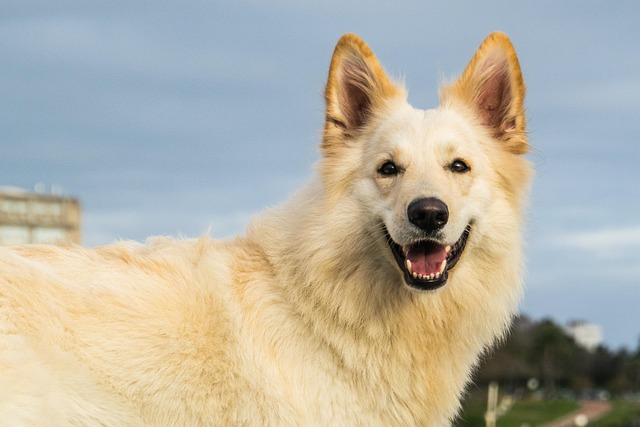
What Should You Watch Out for When Giving Your Dog Treats
Those wagging tails and hopeful eyes when you reach for the treat jar are hard to resist! Snacks can be wonderful tools for training, bonding, and enrichment.
At the moment when the door was pushed open, the scene in front of me made my heart tighten - the wallpaper was covered in claw marks, the floor was scattered with feathers from pillows, and your dog was trembling and curled up in the corner, with saliva foam hanging from the corners of its mouth. This is not playfulness, not revenge, but a soul experiencing extreme panic. Severe separation anxiety is a psychological emergency for dogs, as there is no concept of "temporary departure" in their world, and every separation is experienced as permanent abandonment. To help these furry children out of the abyss of fear, we need to become their safe haven, using scientific methods and infinite patience to rebuild their trust in the world.
Understanding the essence of severe separation anxiety is the first step towards healing. When dogs experience extreme reactions such as self harm, continuous howling, destructive escape behavior, or vomiting and diarrhea, their brains are experiencing a real neural storm. The stress hormone cortisol remains high for a long time, and the amygdala of the fear center is overactive, which is surprisingly similar to the neural mechanism of post-traumatic stress disorder (PTSD) in humans. These dogs often exhibit "anticipatory anxiety" - they start panicking before their owners leave, breathing rapidly and trembling muscles when they see preparations such as holding keys or putting on coats. What's even more heartbreaking is' silent anxiety ', where dogs don't make any sound and just stare blankly at the door until their energy runs out. Only by recognizing the severity of these symptoms can we avoid misunderstanding them as' misbehavior 'or' intentional disturbance ', and instead treat them as genuine mental illnesses.
Environmental renovation is the first step in establishing a sense of security. For these extremely restless souls, traditional cages may become amplifiers of panic, but complete indulgence can lead to danger. The best solution is to create a "progressive safety zone" - first demarcate a larger space with fences, and gradually narrow down the area as training progresses. Lay anti-skid mats in this space, place old T-shirts with the owner's scent (preferably not washed after wearing), and use a canine pheromone diffuser to simulate the soothing scent of a mother dog. Arrange 3-4 different types of puzzle toys, such as frozen Kong toys that require licking, sniffing pads with hidden snacks, and nibbling deer antlers. These not only distract attention, but also naturally release calming endorphins through actions such as licking and chewing. Remember, this space should be frequently used when the owner is at home, making it a part of daily life rather than a punishment zone.

Behavioral reshaping requires precise progressive training like surgery. Starting from a long period of separation is like pushing a person with acrophobia off a cliff. The correct desensitization should start with changing the "departure signal": randomly picking up the key but not leaving, wearing pajamas to go out and pick up the package, breaking the dog's fixed expectation of "the owner is leaving". During formal training, real-time monitoring with a camera is crucial - when the dog shows the first signs of anxiety (stopping playing, starting pacing), it immediately returns, and this time point is the current 'anxiety threshold'. It could be 5 seconds or 30 seconds, starting from this point, train 3-4 times a day, each time only extending 5% -10% of the time. The sign of successful training is not how long a dog can be alone, but the proportion of relaxation it maintains during this process. The most challenging aspect for the host at this stage is to control their compensatory psychology - they must be calm when returning home, and excessive soothing will only reinforce anxious behavior.
A comprehensive intervention of biology, psychology, and society is necessary to address the root cause. In severe cases, veterinarians may recommend short-term use of anti anxiety drugs such as fluoxetine (Prozac), which take 4-6 weeks to establish stable blood drug concentrations. These selective serotonin reuptake inhibitors (SSRIs) work to reduce overall anxiety levels and make behavioral training possible. Cooperate with auxiliary methods such as pheromone therapy and pressure vests to form a multidimensional support system. Meanwhile, adjusting the daily rhythm of dogs is also crucial - fixed walking, feeding, and play times can establish a predictable sense of security, while randomized brief separation training can help break the cycle of anxiety. This kind of structuring and randomization may seem contradictory, but in fact they complement each other, just like music requires both stable beats and improvisational changes.
Emotional reconstruction is the deepest form of healing. These dogs often develop a symbiotic attachment, viewing their owners as the only guarantee of survival. The key to breaking this unhealthy dependence is "high-quality absence and presence" - setting up "no interaction time" at home to allow dogs to learn how to handle themselves; During separation, occasional soothing sounds are made through the camera (but excessive use should be avoided). Increase non-contact interactions such as eye contact and verbal praise, and reduce excessive physical comfort. At the same time, cultivating a sense of work achievement in dogs is also very effective, such as teaching them to "guard" a certain item or area, making solitude a responsibility rather than a deprivation. This psychological reshaping requires a high degree of cooperation from family members, and everyone must maintain a consistent pattern of interaction.
Healing severe separation anxiety is a practice that tests human patience. There will be ups and downs, but when that day finally arrives - when you see it no longer trembling but quietly gnawing on a toy through the camera, when you come home and find it just lazily looking up at you, when you realize that it has learned the most important lesson of dog life: love is not possession, but trust. At this moment, all persistence turned into silent joy. What we give these young children is not only a solution to their problems, but also an invaluable gift: the ability to maintain inner peace when facing the world alone. This ability will enable them to live comfortably and confidently, whether or not they are within our sight.

Those wagging tails and hopeful eyes when you reach for the treat jar are hard to resist! Snacks can be wonderful tools for training, bonding, and enrichment.

Watching your beloved senior dog slow down can pull at your heartstrings. While some changes are part of normal aging,

Watching your dog turn their nose up at a meal you carefully prepared can be incredibly frustrating and worrying. Before resigning yourself to cooking gourmet feasts or panicking,

As a Schnauzer owner, the threat of parvovirus—a highly contagious, life-threatening disease—can feel overwhelming, especially given these dogs’ curious, exploratory nature.

As a Golden Retriever owner, seeing your pup shake their head nonstop or scratch at their ears can spark instant worry. Those floppy, golden ears—so prone to trapping moisture and warmth—are prime real estate for ear mites,

That low growl as you approach their bowl. The stiffened body when another pet walks by. Food guarding turns a basic need into a source of stress for everyone.